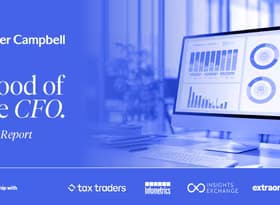Export prices and interest rates cement economy’s recovery in 2026

Although volatility remains a central part of the global economic and geopolitical environment, international financial markets have shaken off the worst of their fears and are becoming less pessimistic about the outlook for growth. This shift is reflected in Infometrics’ latest economic forecasts, which see New Zealand’s patchy recovery becoming more embedded throughout the rest of this year, leading to GDP growth of 2.0%pa by the second half of 2026.
“Many of the downside risks to economic growth, such as China’s unconvincing economic outlook or the disruption from US tariffs, have not disappeared,” said Infometrics Chief Forecaster Gareth Kiernan. “However, the negative effects on exports look likely to be less critical than initially feared. Strong export incomes, particularly across the agricultural sector, will be a key driver of New Zealand’s economic recovery over the next 18 months.”
Continued strong business confidence points towards improved investment and hiring activity in coming months, although Infometrics expects an air of caution to mean the pick-up is a little slower to gather momentum than might otherwise be the case. “Improving jobs growth will be key towards more robust growth in household spending, with the unemployment rate forecast to track downwards from a September 2025 peak of 5.3%,” said Mr Kiernan. “Further declines in debt-servicing costs throughout the second half of 2025, as people continue to refix at lower mortgage rates, will help cement a recovery in household spending towards 2.8%pa growth during 2026.”
Infometrics expects the recovery to be felt unevenly across the country, with agricultural-based regions, including much of the South Island, showing the strongest early signs of growth. Some parts of the economy continue to struggle with soft demand conditions, with weaker net migration and the sluggish housing market weighing on construction activity, and central government maintaining a tight rein on much of its spending. Even in the infrastructure area, where the government has signalled a desire for more delivery ahead of the 2026 election, the gap between rhetoric and reality to date remains stark.
“Forecast economic growth averaging 2.1%pa over the next five years represents an improvement from the tough conditions endured by businesses during 2023 and 2024,” said Mr Kiernan. “But we do not expect GDP per capita to surpass its 2022 peak until the second half of 2027. The reality is that the economy was extremely overheated during 2022, so a quick return to those sorts of activity levels can’t be expected.”
ENDS
More details about Infometrics forecasts can be found on the respective Building, Transport, and Macroeconomic forecasts pages on the Infometrics website.
- Money with a window by Kristina D.C. Hoeppner. Copyright 2010. Licensed under CC BY-SA 2.0.
Related articles



 Gareth Kiernan
Gareth Kiernan

